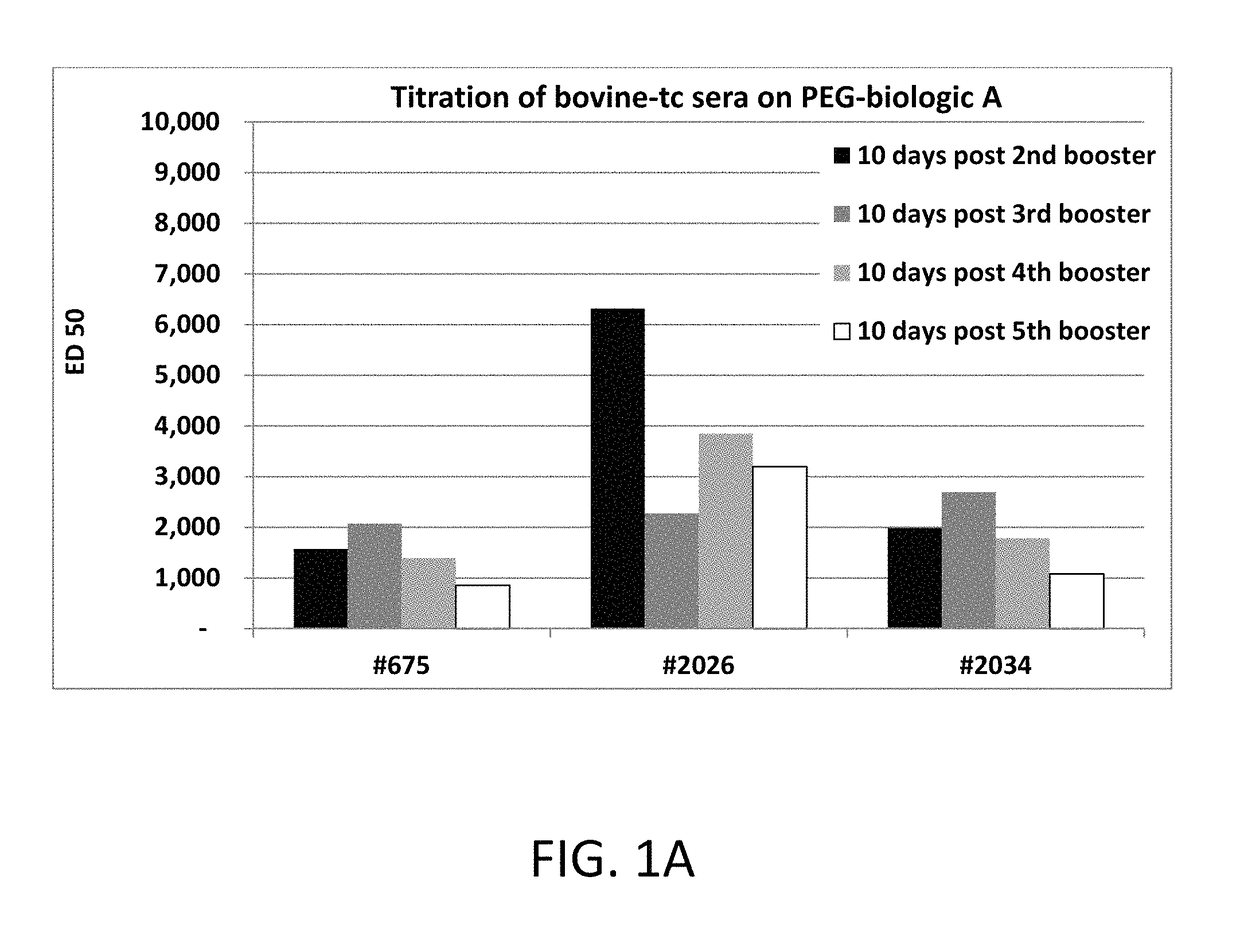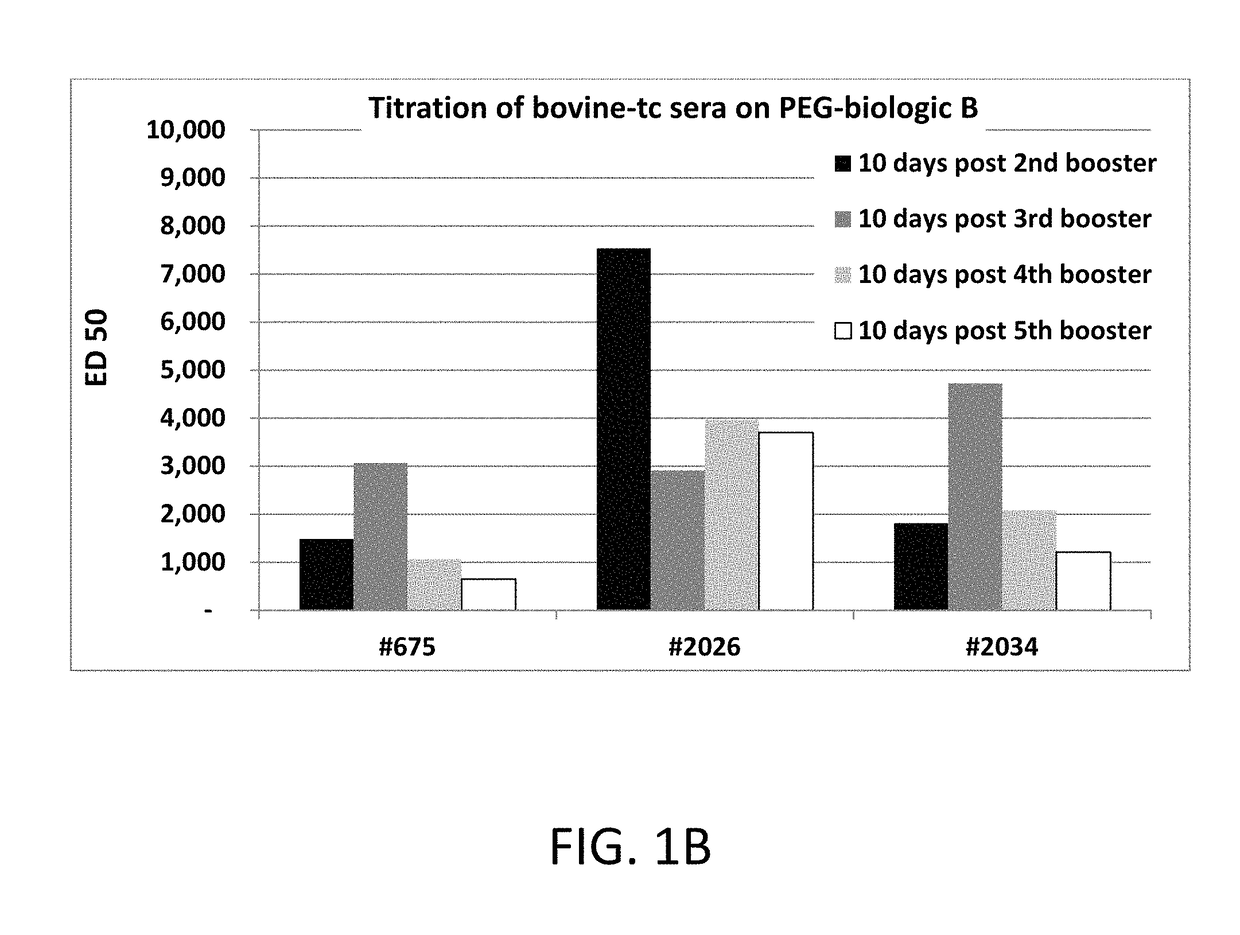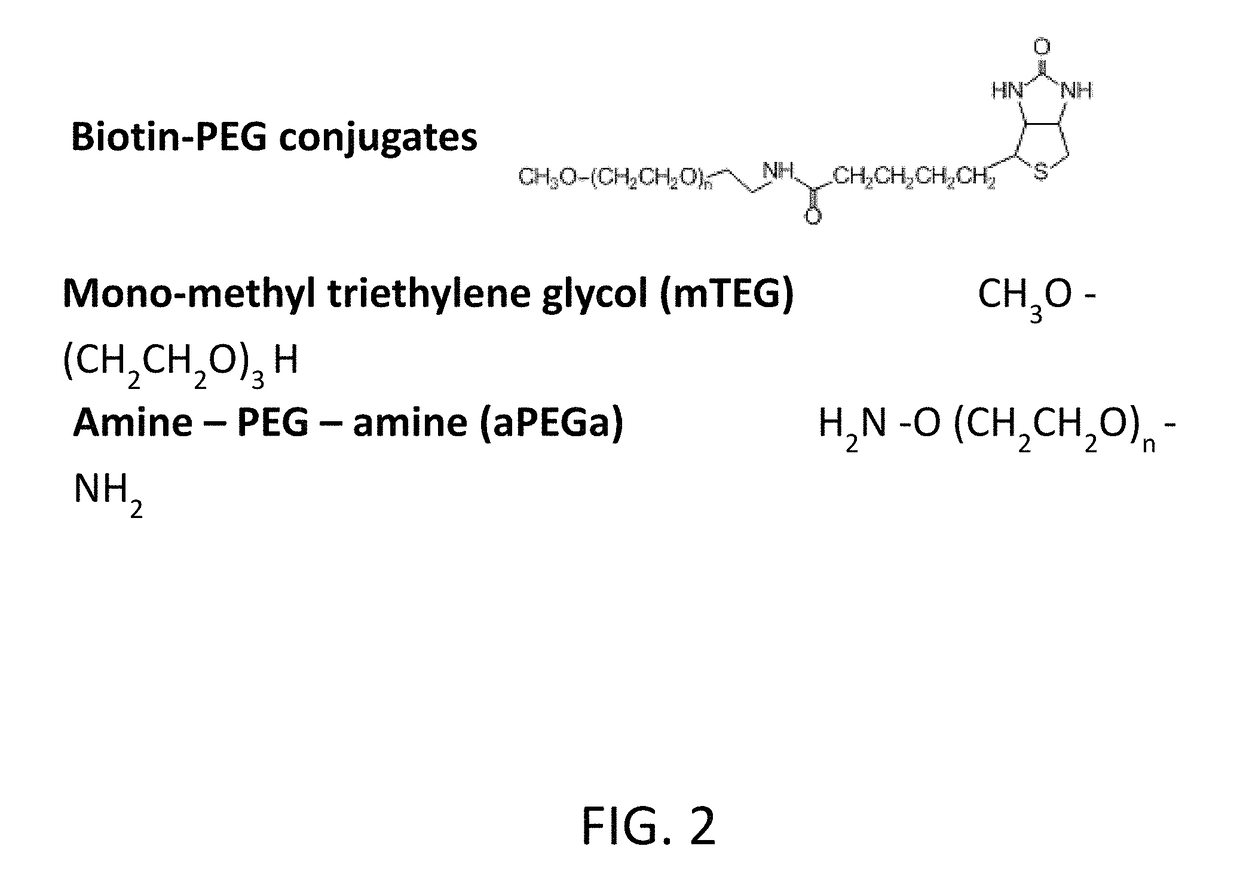Antibodies to polyethylene glycol
a polyethylene glycol and anti-igm technology, applied in the field of anti-igm antibodies, can solve the problem that the test would only detect an igm respons
- Summary
- Abstract
- Description
- Claims
- Application Information
AI Technical Summary
Benefits of technology
Problems solved by technology
Method used
Image
Examples
example 1
Antibody Generation
[0103]Monoclonal anti-PEG antibodies: Mice were immunized with a panel of PEGylated therapeutic compounds and hybridomas were selected that showed binding to PEG coupled to unrelated proteins thus ensuring anti-PEG reactivity. The therapeutic proteins used as immunogens as well as PEGylated proteins used in the screening assays were chemically linked to a branched 40 kD PEG. Monoclonal hybridoma cell lines were derived and two antibodies were identified based on their specificity and affinity to PEG indirectly derived in direct binding assays. The variable region genes from these two cell lines were sequenced, subcloned into human IgG1 Fc bearing constructs, stably expressed in CHO cell lines and purified. These are therefore referred to as chimeric anti-PEG antibodies PEG.1 and PEG.2 monoclonal antibodies (mAb) since they retain their mouse variable region with a human IgG Fc1. Reengineering the monoclonal antibodies with a human IgG Fc did not affect its reactiv...
example 2
Purification of Anti-PEG Polyclonal Antibodies
[0106]PEG affinity resin preparation: 5K PEG—CH3O(CH2CH2O)n(CH2)2SH (Sunbright ME-0505H, NOF) was solubilized in water to 100 mg / ml with 5 mM TCEP. PD-10 desalting column was used to exchange to PBS buffer, pH 7.5 and remove TCEP right before conjugating to SulfoLink Coupling resin (Thermo Scientific). Conjugation was allowed to occur at ambient temperature for one hour. The ratio of 5K PEG to resin was about 1 mg PEG per ml resin. Higher amount of PEG per ml resin did not provide higher binding capacity in purifying anti-PEG polyclonal antibodies. The PEG coupled resin was incubated with excess amount of L-cysteine solution for one hour to block unused iodoacetyl groups.
[0107]Purification of anti-PEG polyclonal antibodies: 500 ml of bovine plasma was first passed over Mab Select Protein A Affinity resin (GE Healthcare) which yielded approximately 3.5 grams of total IgG antibodies and was neutralized to pH 7. Anti-PEG polyclonal antibodi...
example 3
Comparison with Commercial Anti PEG Antibodies
[0109]Rabbit monoclonal anti-PEG antibody (B-47) was purchased from Epitomics, San Francisco and mouse monoclonal anti-PEG IgG (6.3) and IgM (AGP4) from Abnova (original clone developed at Academia Sinica). These were used in comparison with our custom antibodies for specificity testing. Product specification information from the providers indicated mCap specificity for the B-47 and backbone specificity for the 6.3 clone.
[0110]The properties of the antibodies of the present invention are compared with selected commercial anti-PEG antibodies in Table 2.
[0111]
TABLE 2Characteristics of Evaluated Anti-PEG IgG AntibodiesNamePEG. 1PEG. 2# 2026B-476.3SourceThis workThis workThis workCommercialCommercialImmunizedMouseMouseTranschromosomalRabbitMouseanimal speciesBovineTypeMonoclonalMonoclonalPolyclonalMonoclonalMonoclonalchimeric IgGchimeric IgGhuman IgGrabbit IgGmouse IgGHeavy chainHuman IgG1Human IgG1HumanRabbitMouseLight chainMouseMouseMostly...
PUM
| Property | Measurement | Unit |
|---|---|---|
| MW | aaaaa | aaaaa |
| molecular weights | aaaaa | aaaaa |
| pH | aaaaa | aaaaa |
Abstract
Description
Claims
Application Information
 Login to View More
Login to View More - R&D
- Intellectual Property
- Life Sciences
- Materials
- Tech Scout
- Unparalleled Data Quality
- Higher Quality Content
- 60% Fewer Hallucinations
Browse by: Latest US Patents, China's latest patents, Technical Efficacy Thesaurus, Application Domain, Technology Topic, Popular Technical Reports.
© 2025 PatSnap. All rights reserved.Legal|Privacy policy|Modern Slavery Act Transparency Statement|Sitemap|About US| Contact US: help@patsnap.com



